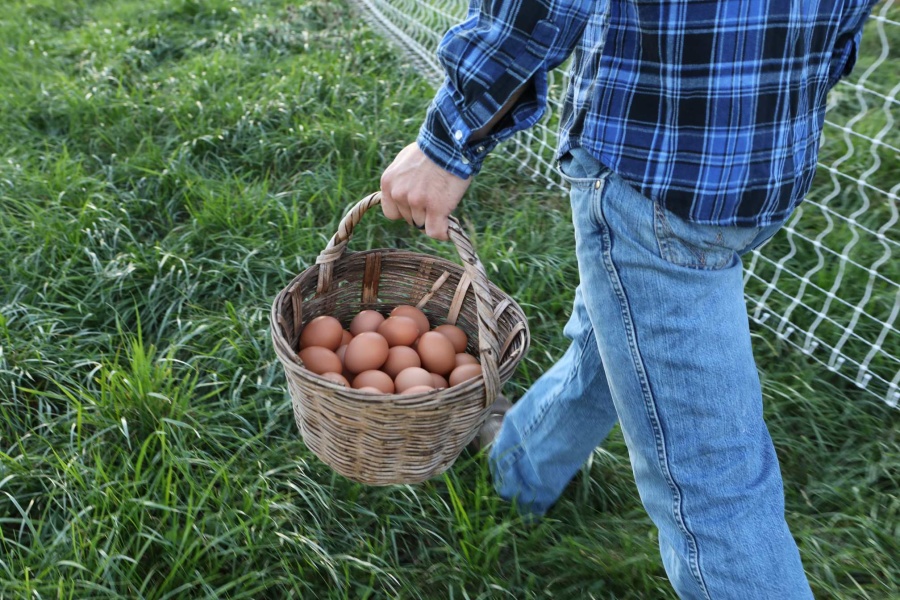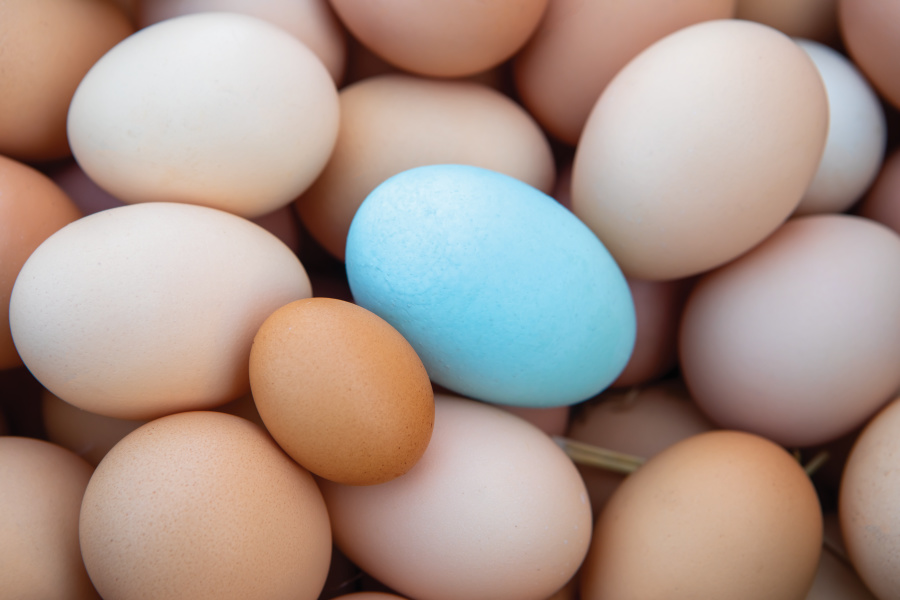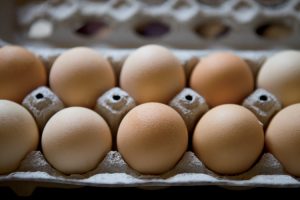Home > Lifestyle > Food For Thought > 10 Things You Probably Didn’t Know About Eggs
10 Things You Probably Didn’t Know About Eggs

Did you know the average American eats around 19 pounds of eggs per year? Whether you like them scrambled, boiled, baked in a tasty treat or atop a juicy burger, we can all agree that eggs are a delicious and nutritious source of protein. But how much do you really know about this versatile culinary staple? Keep reading to learn a few fascinating and little-known facts about eggs.
1. Storing eggs upside-down makes them last longer.
Did you know that turning your eggs upside down before stashing them in the fridge will make them last longer? It may seem like an old wives’ tale, but it’s true. Placing the pointy end down in the carton will prevent air pockets inside the shell from coming in contact with the yolk, which helps slow down the aging process. Pretty wild, huh?

2. Every chicken egg is white in the beginning.
Eggs come in a wide range of colors, from creamy white and speckled brown to pastel blue and blush pink. With so many colors out there, you may be surprised to learn that only three pigmentations determine the ultimate color of a chicken’s egg. But even though different chicken breeds carry different levels of pigmentation, which results in different colored eggs, every egg begins its journey white. The pigmentation comes later.
3. Chickens lay lighter colored eggs as they age.
You probably wouldn’t notice this with a chicken who lays white eggs. But many chicken owners with birds who lay brown eggs have noticed egg coloration changes as their hens age. In addition to less saturation, particularly on the tapered end of the egg, some chickens will lay lighter colored eggs when they’re experiencing more stress than usual.
See more: 10 Things You Should Know Before Getting Started With Backyard Chickens

4. Eggshell colors don’t indicate nutritional value.
Purchasing and consuming an assortment of egg colors may be trendy today, but did you know that there was a time when people believed white eggs were better for you than brown (or blue, or green) eggs? They looked cleaner, and thereby gained a reputation as being the optimal egg. While this myth has been debunked, it’s worth noting that the color of an eggshell doesn’t impact the nutritional quality of what’s inside.
See more: 10 Incredible Farm Facts About Eggs

5. Egg yolk color does indicate nutritional value.
On the other hand, the color of the egg yolk says a lot about the nutritional value of the egg. Eggs with darker, more saturated and rich-colored yolks are generally a sign that the chickens were pasture-raised or had a diet that consisted primarily of foraged grasses and bugs. Because that kind of diet indicates carotenoids, the yolks tend to be more vibrant in appearance.
See more: 5 Chicken Breeds You May Not Be Familiar With
6. Floating eggs are older than sinking eggs.
The short and sweet of this is that fresh eggs sink and old eggs float. Why? Because eggs contain air pockets. The more air that has penetrated the egg, the older the egg is. And the more air inside an egg, the more buoyant it becomes. Freshly laid eggs will lie flat on the bottom of a water-filled jar while eggs that are older than three months (and should be discarded) will float straight to the top.

7. You can freeze or water glass eggs for long term storage.
Yes, you can freeze eggs! You can technically freeze them for up to a year, although most people recommend eating them in the first four months for optimal freshness. If you don’t have space in the freezer or want to keep your eggs fresh for even longer, you can water glass them for shelf stable storage up to 18 months. Water glassing is simple, but you only want to use farm fresh eggs, not grocery store eggs (which tend to be much older).
See more: How to Get Started Raising Backyard Chickens
8. Washed eggs need to be refrigerated.
When a hen lays an egg, with that egg pops out with a nearly invisible coating called a bloom. This bloom helps prevent air and bacteria from permeating the shell and prematurely aging the egg. That’s why fresh eggs — straight from the chicken — are often placed in bowls or baskets on the kitchen counter. Grocery store eggs, on the other hand, have been washed, thus removing the bloom and requiring refrigeration to keep them fresh.

9. Salt draws moisture out of eggs.
Next time you make a pan of scrambled eggs for breakfast, leave out the salt until the very end. Salting your eggs while they cook will draw out extra moisture, resulting in a plate of dry eggs instead of tender, fluffy ones. Make this one minor adjustment in your breakfast routine to seriously up your scrambled egg game.
10. Egg carton labels are convoluted.
Free range? Organic? Non-GMO? There are more labels on egg cartons these days than ever before, but what do they mean? When you see the terms “free range” or “cage-free” on an egg carton, you probably imagine happy chickens foraging in a grassy pasture. But there’s a lot more to these labels than most grocery shoppers realize. Lisa Steele explains these labels in great detail, but the short and sweet version is if you want the most naturally raised eggs on the shelf, look for descriptions like, “certified humane,” and “pasture raised.”




[…] Foto: Shutterstock, fuentes: huevoincreíble.org, farmflavor.com […]
[…] Foto: Shutterstock, Quellen: unglaublichegg.org, farmflavor.com […]